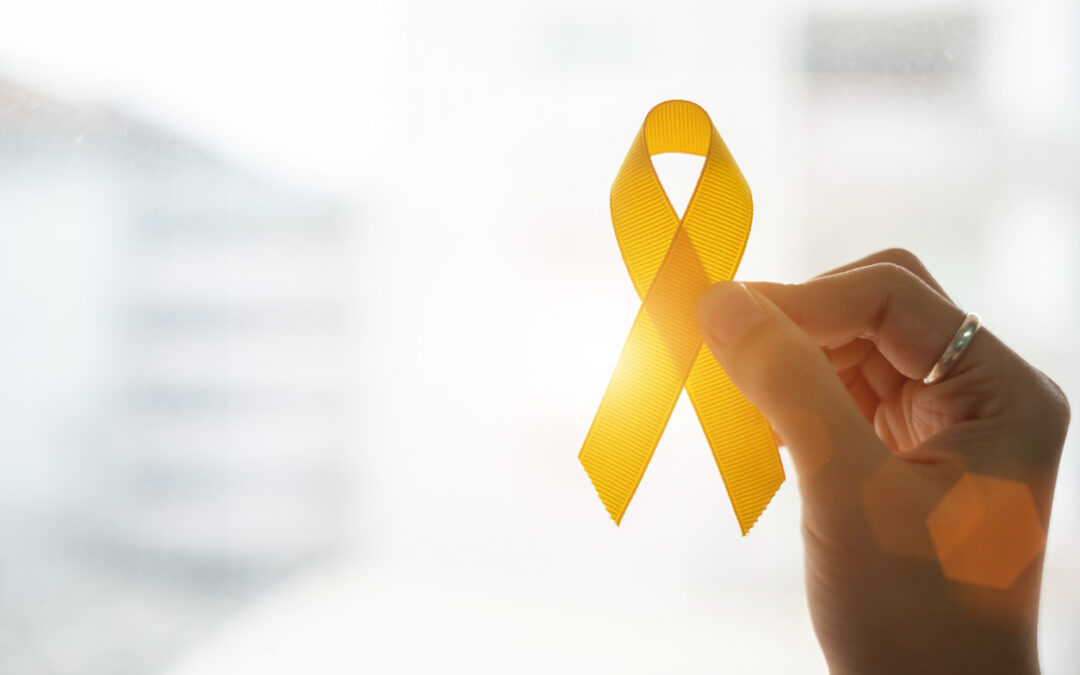
Aug 25, 2023 | Southern Arizona
Arizona Oncology proudly announces its participation in the Enhancing Oncology Model (EOM), a novel program aimed at improving cancer care. Only 44 oncology practices across the country, including ours, have been selected to take part in this initiative. Backed by the Center for Medicare and Medicaid Innovation (CMMI), the program aligns with the Biden Administration’s Cancer Moonshot effort to enhance the cancer treatment experience.
What EOM Means for Patients
The EOM primarily targets Medicare and Medicaid patients undergoing chemotherapy for seven cancer types: breast cancer, chronic leukemia, small intestine/colorectal cancer, lung cancer, lymphoma, multiple myeloma, and prostate cancer. Patients being treated for these conditions at Arizona Oncology can expect the following benefits:
- Round-the-Clock Clinician Access: Easy access to appropriate clinicians and seamless communication with your oncologist and care team between appointments, all aided by real-time access to medical records.
- Personalized Support: Enhanced services like patient navigation, tailored to provide guidance throughout the cancer treatment journey.
- Tailored Care Plans: Detailed care plans aligned with patient preferences, encompassing prognosis, treatment options, symptom management, and overall health needs.
- Social Assistance: Help with health-related social needs, including food and transportation through https://usoncology.findhelp.com/.
- Feedback Platform: Opportunities to share feedback on the cancer care experience and health outcomes.
Aim of EOM: Improved Patient Care
EOM’s core objective is to enhance care coordination and elevate patient outcomes. By focusing on individual patient needs, the program aims to provide better support during cancer care, promote clearer understanding of diagnoses, and facilitate collaborative treatment planning with oncologists.
Connect with Arizona Oncology
Our involvement in EOM stems from our commitment to supporting patients and refining their care experience. This initiative allows us to maintain comprehensive, coordinated care while intensifying our efforts to identify and address health disparities. Arizona Oncology remains dedicated to prioritizing patient care as we embrace EOM. Together, we’re embarking on a journey toward improved oncology care, focused on practicality, innovation, and an unwavering commitment to helping our patients thrive with and beyond cancer.

Aug 3, 2023 | Southern Arizona
Exposure to ultraviolet light is the primary cause of melanoma and nonmelanoma skin cancers and premature aging. Both of these can be largely avoided by protecting the skin from ultraviolet rays – whether from the sun or tanning beds. If you’re going to be outdoors one of the best things you can do to protect your skin is to wear sunscreen. Wearing protective clothing and avoiding the sun at the hottest times of the day (10 am – 4 pm) can also reduce the risk of developing skin cancer.
With so many options, numbers and phrases on sunscreen packages, going to the store to choose the one that’s best for you can be overwhelming. Here are some things to help you understand what you’re reading on a sunscreen label.
Your Checklist for Choosing Sunscreen
- Choose the type of sunscreen you will apply. Sunscreen options include lotions, sprays, sticks, and gels. It is easiest to ensure where you are applying sunscreen with lotions, sticks and gels so that areas do not get missed. Sunscreen sprays are popular and convenient; just be sure to avoid spraying into eyes, nose and mouth and apply generously.
- Choose a high enough SPF. The sun protection factor (SPF), in a product ranges from 2 to 100 and refers to how much of the sun’s UVB rays are blocked.
- SPF 15: Block 93% of the sun’s UVB rays
- SPF 30: Blocks 97% of the sun’s UVB rays
The American Academy of Dermatology recommends wearing sunscreen with SPF of 30 or higher.
- Select a broad spectrum sunscreen. The sun generates both ultraviolet (UV) A and B rays. UVA rays cause premature aging of the skin (wrinkles and age spots.) UVB rays cause sunburns. Both UVA and UVB rays can contribute to skin cancer and your sunscreen should include protection from both.This might also be called “broad spectrum” sunscreen. A sunscreen that does not say “broad-spectrum” only protects skin from UVB (burning) rays.
- Identify the active ingredients you prefer. Sunscreens come in two different categories: barrier vs absorption
- Barrier sunscreens, like titanium dioxide and zinc oxide, put a layer of protection between the sun and your skin that deflects the sun’s rays. This is often available in a white, thick cream or stick.
- Chemical sunscreens absorb the sun’s rays which often use active ingredients oxybenzone or avobenzone.
- Remember that water resistant is not waterproof. “Water resistant” and “sweat resistant” mean the same thing on a sunscreen label: these sunscreens have been proven to remain effective for at least 40 minutes while you’re in the water or sweating. You have to reapply when you get out of the water to prevent sunburn.
Prior to heading outdoors, whether it’s all day or just running errands in your car, apply a broad-spectrum sunscreen of at least SPF 30 (and water/sweat-resistant for swimming or activities) 20 minutes beforehand. Then, you will enjoy the great outdoors with peace of mind that you’re reducing your risk of skin cancer. And don’t forget to reapply every 90 minutes to two hours and after swimming or sweating.
Originally posted in 2017, updated in 2024.

Jul 20, 2023 | Southern Arizona
According to the American Cancer Society, about 2 million new cancer cases are expected to be diagnosed in 2024. More than 18 million Americans will be living beyond cancer. The American Cancer Society reports a majority of cancer survivors (69%) were diagnosed 5 or more years ago.
Prostate, breast and colorectal cancers are the most common diagnoses among survivors. The increase in survival rates over the last 5 years can be attributed to early detection methods for cancer screening, and advancements in identifying new targeted cancer therapies. As cancer detection and treatment continue to improve on disease free survival, it is estimated that there will be 26 million survivors by 2040.
Who is a survivor?
There are many definitions of a cancer survivor but most agree that an individual is considered a cancer survivor from the time of diagnosis through the balance of his or her life. The cancer patient generally moves through three distinct phases.
- The first phase, often the shortest, is from diagnosis to the completion of initial cancer treatments. To cure cancer or to extend quality of life requires intensive oversight of the patient and accompanying symptoms and side effects. This phase is frequently the most physically and emotionally distressing for patients to navigate and results in heavy reliance on healthcare professionals and one’s support network.
- The second phase transitions the patient from treatment to extended survival with evidence that the disease is responding to treatment. During this phase, cancer survivors may worry, fear a recurrence, or develop a feeling of isolation as they transition out of active cancer therapy and into surveillance. Imaging, laboratory studies and appointments become less frequent and patients may be prescribed additional therapies to prevent the recurrence or spread of the cancer.
- The final phase constitutes long term survival. Patients may see their oncologist annually or be followed by their primary care physician. Patients may or may not continue to take medications to minimize recurrence.
Most cancer patients are ecstatic when they complete active treatment. Patients were educated about what to expect during chemotherapy, after surgery or with radiation. They were reassured that all efforts would be made to minimize side effects during treatment. Unfortunately, as a health profession, we haven’t done a great job in preparing the patient about what to expect once this phase is completed.
In 2005, the Institute of Medicine and the National Research Council released the report “From Cancer Patient to Cancer Survivor: Lost in Transition” which highlighted gaps in the care for cancer survivors and recommendations for survivor- ship care. Many survivors experience physical, emotional, and psychosocial effects of cancer and it treatment. Fortunately, oncology practices have started responding to the unique needs of survivors and are now focusing on survivorship as a distinct entity of cancer care.
It is imperative that survivors continue to follow cancer screening recommendations, practice healthy habits, and meet regularly with their primary care physician.As a cancer patient moves further away from active treatment, it’s difficult to remember all the treatments and studies one has undergone. Patients completing primary treatment are provided a comprehensive care summary and follow-up plan with healthy maintenance recommendations written by the primary oncology provider(s). It is a useful tool that patients can refer to throughout the remainder of their lives and provide to their providers.
Cancer survivors are at risk for side effects from treatment that linger such as neuropathy, fatigue and memory problems. Survivors are also at risk of effects that can develop months to years after treatment such as osteoporosis, infertility, heart problems, and second cancers. Each patient’s risk profile is unique and directly related to their health status, family history and the types, as well as duration of treatments.
Survivors need to focus on wellness, diminish the effects of cancer and control any personal comorbidities such as diabetes, obesity and heart disease. It is imperative that survivors continue to follow cancer screening recommendations, practice healthy habits, and meet regularly with their primary care physician.
Being a cancer survivor is a lifetime commitment to living well and minimizing risks. Many survivors, their families and friends thought that once treatment was over, life would revert back to the way it was before a cancer diagnosis. Survivors find that there is now a new normal which involves negotiating roles with families, friends and employers, making lifestyle modifications and coping with fluctuating emotions. Cancer survivors, empowered and partnered with their providers, are emerging from their cancer journey more resilient than ever.
Originally posted in 2017, updated 2024.

Jul 18, 2023 | Southern Arizona
Ways to Minimize Side Effects from Cancer Treatment
Because of advances in cancer treatment, more and more people can expect to reach remission or to live a long life with cancer. This is wonderful news! However, going through cancer treatment often isn’t easy. Cancer medications and radiation treatments can cause a variety of side effects that can be difficult to deal with. Here are some things you can do at home or with the help of your doctor to minimize side effects from cancer treatment.
Appetite Loss. People being treated for cancer often don’t feel hungry. But when you don’t get enough nutrients, you can become weak, dehydrated, or lose too much weight. If you are experiencing appetite loss from cancer treatment, try these tips:
Drink lots of liquids. If eating a full meal seems too much, opt for smoothies, healthy shakes, broths, and plenty of water.
Choose high-nutrient foods. If you are eating less, it’s more important than ever to focus on healthy, nutrient-dense foods that are high in protein and calories. Fruits and vegetables as well as whole grains are good choices, along with modest amounts of meat and dairy products. Arizona Oncology offers nutrition services to help with appetite loss and other nutritional issues during cancer treatment. Talk to your treatment team for more information
Eat your biggest meal when you are most hungry. If you don’t ever feel hungry, try eating several small meals or snacking throughout the day.
Bleeding and Bruising. Some cancer treatments make you more prone to bruises or bleeding by lowering the platelet count in your blood. Some things you can do to reduce your risk of bruising or bleeding include:
Avoid certain medications. Common, over-the-counter medications that increase bleeding risk are ibuprofen and aspirin. Your doctor can provide you with a more comprehensive list.
Brush your teeth gently. Make sure your toothbrush is labeled “soft”.
Use an electric shaver. This will avoid you nicking your skin with a razor.
Be extra careful. Take extra care when you are in the kitchen, doing sports, or working with tools.
Nausea and Vomiting. Feeling sick to your stomach or vomiting are common side effects of cancer treatment. Depending on what is causing the upset, your doctor may recommend one or more of the following steps:
Anti-nausea medication. Nausea and vomiting can be caused by different things, so there is not a one-size-fits-all approach. Your doctor will recommend a medication and let you know when and how often to take it. You may need to take the medication even on days when you don’t feel sick. Tell your doctor if you aren’t getting relief, because a different medication may work better for you.
Avoid certain foods. Greasy, fried, spicy, or sweet foods may make you feel sick. Eating foods cold can be easier on your stomach. Sometimes the smell of certain foods alone can upset your system. If this is the case, consider asking someone else to prepare your food.
Time your meals around your treatments. Pay attention to how eating before treatments affects you. For some people, a small snack before treatment helps calm their stomach, while others need to avoid eating before treatment altogether. Wait at least an hour after treatments before eating or drinking.
Complementary medicine. Acupuncture, deep breathing, relaxation techniques, hypnosis, and guided imagery are complementary practices that may help with nausea and vomiting. Ask your treatment team for more information on these services if you are interested in trying one of these therapies
Skin and Nail Changes. Radiation, chemotherapy, stem cell transplants, immunotherapy, and targeted therapy can all cause skin-related changes. Depending on the treatment type, these can show up as dryness, itchiness, irritation, rashes, or blisters. It is important to tell your doctor about any skin changes you experience. At home, the following tips can help minimize skin and nail issues related to cancer treatment:
Use mild soaps. Mild, fragrance- and dye-free soaps are best for irritated skin. Your nurse can recommend specific skin products.
Moisturize. Moisturize after showers while your skin is still wet. Your nurse can recommend specific moisturizers and ointments to deal with especially dry, irritated skin.
Use warm, not hot water.
Wear gloves.
Don’t get a manicure or pedicure during treatment.
Use medications for rashes if your doctor recommends them.
Insomnia. If you are having problems falling asleep or staying asleep during cancer treatment, you are not alone. Sleep problems can be a side effect of treatment or the result of medications, stress, or other factors. If your sleep issues are due to pain, urinary issues, or diarrhea, your doctor can help. You may also want to try some of the recommendations below:
Practice good bedtime habits. Avoid electronics at least two hours before bed. Keep your room cool, dark, and quiet. Don’t eat or drink a lot before bedtime. Get your exercise earlier in the day, not at night.
Cognitive behavioral therapy (CBT). If your thoughts are keeping you awake at night, a CBT therapist can help you manage negative thought patterns and calm your mind. Relaxation therapy. Guided imagery, muscle relaxation, and self-hypnosis can also help you get a good night’s rest.
Sleep medicication. Medication to help you sleep can be prescribed on a short-term basis if other strategies don’t work.
Having strategies to minimize side effects can help you feel more in control as you undergo treatment for cancer. Some side effects cannot be controlled, such as hair loss, but there are ways to cope with them. For more tips on dealing with side effects from your cancer treatment, visit https://arizonaoncology.com/cancer-treatment-tips/chemotherapy-side-effects/.

Jul 9, 2023 | Southern Arizona
Often times, when people hear the word “cancer”, sarcoma isn’t one that quickly comes to mind. Some may not even know what a sarcoma is–so it’s no surprise that it’s considered the “forgotten cancer.” To bring it to the forefront, July has been declared Sarcoma Awareness Month. Now, more than ever, is the perfect time to learn more about this rare disease.
What is Sarcoma?
Sarcomas can be broken into two main types: soft tissue sarcomas and bone sarcomas. There are, however, more than 50 different subtypes that fall under these two categories.
Soft tissue sarcoma is a broad term for cancers that start in soft tissues – such as muscle, tendons, fat, lymph and blood vessels, and nerves. These soft tissue cancers can develop anywhere in the body but are found mostly in the arms, legs, chest, and abdomen.
Sarcomas account for 1% of all adult cancers and 15% of all childhood cancers. The American Cancer Society estimates about 13,590 soft tissue sarcomas will be diagnosed in the United States in 2024.
What to Look For
Sarcomas are rare tumors that are often difficult to detect or diagnose until they have reached more advanced stages. There are, however, certain signs to pay attention to.
See a doctor right away if you experience any of these problems:
- A new lump or a growing lump anywhere on your body
- Abdominal pain that continues to get worse
- Blood in your vomit or stool
- Black, tar-like stools
In many cases, these symptoms are caused by something other than sarcoma. However, it is important to have it verified by a medical professional. Your doctor may use a variety of tests including X-ray, CT scan, MRI, ultrasound, PET scan, and biopsy to determine whether or not you have soft tissue sarcoma.
Related Reading: Mandy’s Story: A Journey with Ewing’s Sarcoma, a very rare cancer.
Surgery is the first-line treatment for soft tissue sarcomas. Once the tumor has been removed, radiation and/or chemotherapy may be given to help stop it from spreading.
Can Sarcomas Be Caught Early?
Screening tests and exams are not typically recommended for detecting sarcoma, unless you have a strong family history of soft tissue sarcomas or other cancers. If you feel as though you are at a genetic risk, you may want to talk with your doctor about whether or not you would benefit from genetic testing.
Sources:
Originally posted in 2018, updated in 2024.

Jul 7, 2023 | Southern Arizona
Approximately 228 Americans are diagnosed every day with bladder cancer. July is recognized as National Bladder Cancer Awareness Month, and Arizona Oncology would like to remind all men and women to speak with their healthcare providers about the signs and symptoms, as well as screenings, for the disease. By finding cancer early, treatment is more effective.
According to the American Cancer Society, it is estimated that nearly 83,190 new bladder cancer cases are expected this year, and more than 16,800 people will lose their lives to the disease. Knowing the signs and symptoms of bladder cancer can aid in early detection and increase the opportunity for survival. Symptoms include:
- Blood in the urine
- Frequent urination
- Feeling the need to urinate, but not being able to
For people with certain risk factors, screening should begin earlier or repeated more frequently. While the exact cause of bladder cancer is unknown, risk factors for the disease include:
- Smoking – smoking is the greatest risk factor for bladder cancer. Chemicals from tobacco can enter the blood stream, through the lungs, and are filtered by the liver and collect in the bladder. These chemicals damage the cells that line the inside bladder wall.
- Work exposure – some professions are more susceptible to harmful chemicals. These occupations include: dye makers, hairdressers, truck drivers, machinists, printers, painters, leather workers and rubber manufacturers.
- Race – Caucasians are twice as likely to develop bladder cancer as African Americans or Hispanics.
- Gender – men develop bladder cancer four times as often as women.
- Age – the risk of developing bladder cancer increases with age.
- Family history – the chance of developing bladder cancer rises when immediate family members have or had the disease.
- Chronic bladder inflammation – urinary infections, kidney stones and bladder stones do not cause cancer, but they are linked to the disease.
- Arsenic – this chemical in drinking water is linked to an increased risk of bladder cancer.
- Inadequate liquid intake – people who drink plenty of liquids each day have a lower risk of developing bladder cancer.
- Bladder birth defects – very rarely, a connection between the belly button and the bladder doesn’t disappear as it should before birth and can become cancerous. There is another very rare birth defect called exstrophy, which can also lead to bladder cancer.
- Earlier Treatment – some drugs or radiation used to treat other cancers can increase the risk of bladder cancer.
As a member of The US Oncology Network, one of the nation’s largest networks of integrated community-based oncology practices dedicated to advancing high-quality, evidence-based cancer care, Arizona Oncology is able to enhance patient access to the latest advances in therapies, clinical research and technology to patients in the community.
(Updated May 2024. Originally published July 2014.)








